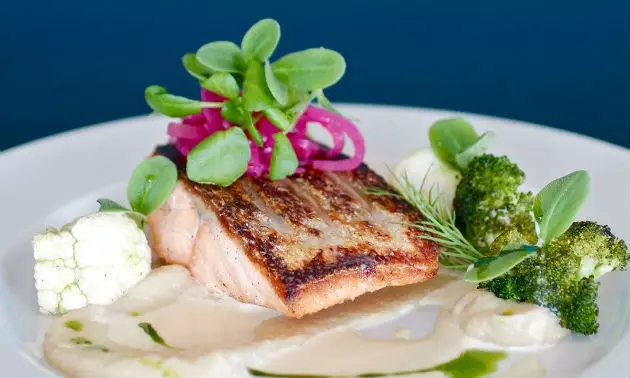
Silfra, the restaurant of the Ion hotel
At the start of the new millennium, Iceland was booming. His bankers bought English football teams. Their shiny SUVs jammed the narrow streets of central Reykjavik. The lifestyle hedonistic portrayed in the novel Hallgrimur Helgason 101 Reykjavík (perhaps you have seen Baltasar Kormákur's film) became even more tangible when the capital's bars and nightclubs began to open 24 hours a day, turning the volcanic island in a North Atlantic Ibiza.
So in 2008 , the country bottomed out and its financial institutions collapsed, its currency crashed, and inflation, interest rates, and unemployment skyrocketed. According to the gloomy predictions on the British news, Iceland was on the verge of collapse , its 300,000 citizens lost their public services and pensions, and would be forced to work 18 hours a day, seven days a week for the next five generations, just to get the nation out of the hole. All this makes its gradual recovery since 2011 and the joviality of the locals a bit surprising.
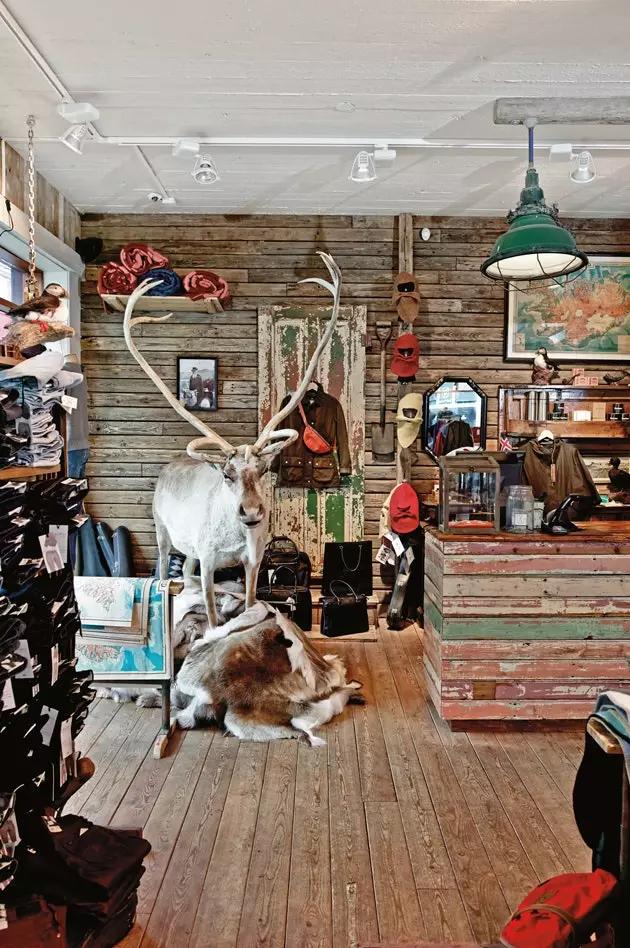
Fashion clothing store in Reykjavik
“Maybe the crash wasn't so bad,” says the man sitting next to me at the Boston, a modern lounge—with kitschy gold Chinese wallpaper, mirrored columns, and a stuffed raven behind the bar—in Laugavegur , the main street of Reykjavík. “Before all this happened, I was making money. And I didn't think of anything else. Then all of a sudden it all went wrong and I realized something great: that my wife is a fantastic person and she tells really good jokes.” He raises his beer and makes a toast.
What happened in the aftermath of the collapse was that Icelanders reverted to a way of simpler and home life . Unable to import products from abroad, except for the most essential, they have rediscovered its roots . Milan's clad metrosexual has given way to the hand-knit jacket Nordic hipster. A bearded guy, a rosy-cheeked woman. She wears braids, he wears a bun. They have a baby; and all thick sweaters. The look is an example of local fashion brand Farmers Market, whose catalog features men so brave and hairy who turn a photo shot of Woolrich into a One Direction concert.
The lopi sweater (the typical Icelandic) made of sheep's wool is back in fashion. This state of mind has also affected the culinary scene , which has become less formal, more folksy. The emphasis is on fresh fish and local lamb, free range grazed and fed only moss, Armeria maritime and sedge. The result is a delicate and intense flavor more similar to wild species such as chamois.
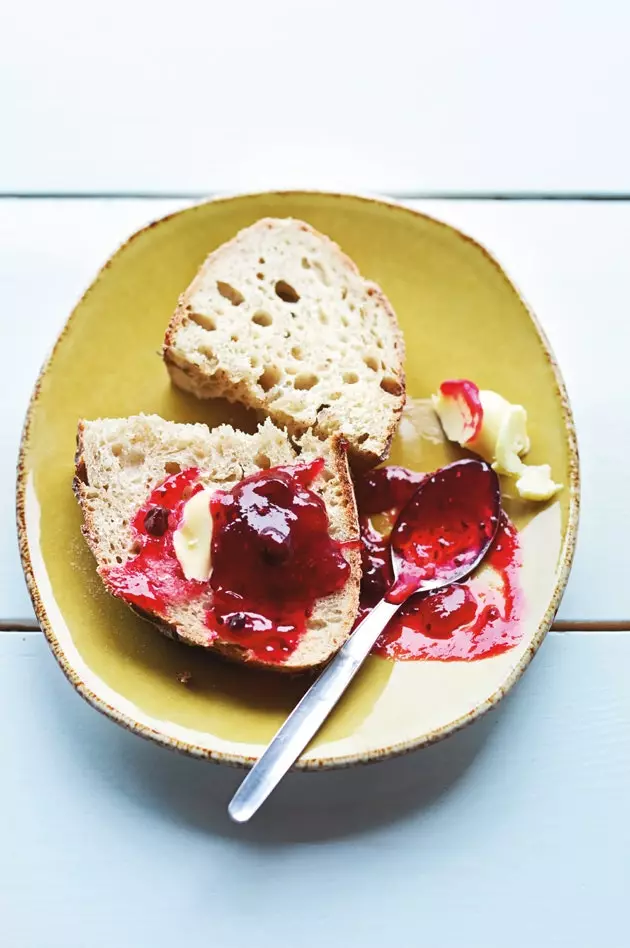
Bread with rhubarb jam at Bergsson Mathús
Opened a year ago, Nora Magasin is Reykjavik's answer to gastropub . looking like Icelandic chic thrift store , is a Nordic evolution of the popular interiors of the sofo in Stockholm , all bouclé sofas from the 50s and style art Woolworth's . There are old school chairs, embroidered cushions, a Bakelite radio, and the waitress is wearing 1940s dresses. glasses of water are jars of jam . Melamine plates are stacked on a shelf above Naugahyde (scay) stools. The beer is craft (such as Einstök) and the food, rich and abundant. Norwegian lobster (a variety of Norway lobster) is 'battered', fried and sprinkled with sumac; the freshly caught tusk (similar to cod) is roasted and served on a bed of potatoes with paprika.
The chocolate volcano is big enough to send anyone to bed. Nora Magasin declares itself whale friendly (whales are allowed). The minke whale , formerly part of the Icelandic subsistence diet , is still eaten. “In the 70s, when I was a child, we would accompany it with brown sauce once a week,” a local tells me, wrinkling her nose. “We never saw things like chicken – it was too expensive. We ate lamb on Sundays, leftovers on Monday, and fish the rest of the days.”
If you read the list of traditional Icelandic food you realize that it is a town prepared to squeeze nutrients out of almost anything , from the birch tea, moss syrup wave black camarina jam (made from a perennial plant), at seabird eggs, horse meat sausages and the infamous hákarl (made from rotten meat from the Greenland shark, it makes the stinky lutefisk, a Norwegian dish of dried white fish and caustic soda, look exquisite) .
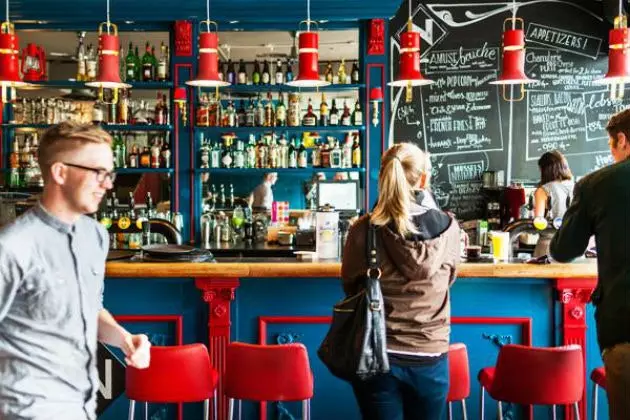
A gastropub with the look of an Icelandic chic thrift store
Unlike other Nordic countries, the nature has not been kind to Iceland . On the island there are hardly any trees, so there are no forests full of mushrooms and berries. No deer, no elk, no bear that ends up canned like in Finland , and the license to hunt reindeer is granted by a system of draw so random and complex that discourages even the most carnivorous. What there is are ducks, three varieties of geese and ptarmigan (a species of lanky grouse that is popular at Christmas) . So, as pointed out elizabeth david , frugality is the mother of gastronomy. “And what about the puffins?” I ask the former whale eater. “We didn't used to eat them,” she says. “They weren't very common in Reykjavík, but they were in other towns.
The young puffins they feel attracted by the lights , so they fly to the villages.” She shrugs her shoulders. What can be done? In this place, when food falls from the sky, you can't afford to turn it down just because it turns you on. At Fish Market, a classy Asian-influenced restaurant run by the young Hrefna Rósa Sætran –one of the best chefs in Iceland–, the whale and puffin breast smoked are served as entrees. Having tried the whale in Norway, she agrees with crocodile dundee about worms and ants: "You can live on them, but they taste like shit." However, I dare to try smoked puffin . Although, upon request, I hear my mother during a trip to the Farne Islands in 1972: “Oh look at them, aren't they lovely little things?” and change my mind. To show that I am not so 'gastro-liberal', I throw perch with foie gras over a prawn cracker home.
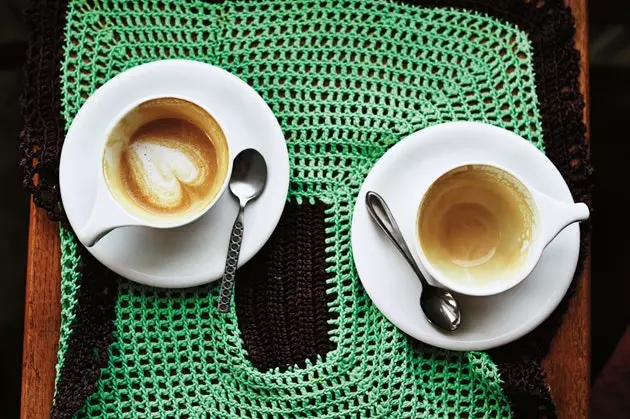
Roasters prepare delicious coffee
After seeing geese in the city pond, I ask the waitress if the foie is Icelandic. She twists her face. "No, it would be illegal here to treat a goose like that," she says. I sense a sense of national disapproval. Maybe I should have gone for the whale. Imposing and extravagant, the church of Hallgrímskirkja it is perched on a hill not far from the Fish Market. Like good Nordics, the Icelanders have a predilection for what bizarre : there are hand-knitted hoods on streetlights, sardine cans with geraniums , Björk in the background music of the supermarket and the headquarters of the Icelandic Esperanto Association in the center . Hallgrímskirkja comes from that tradition – part lutheran church , part spaceship–. From the rocket-shaped tower you can see the streets with houses in blue, green, red and cream tones and, in the background, the great bay. Their cliffs are covered with snow most of the year.
Reykjavik is a fishing village with the accessories of a capital , but without delusions of grandeur. There is a refreshing modesty, which was already here before the crisis. In the Austurvöllur square , the cathedral is not much bigger than a parish church and the National Parliament is the size of a public library.
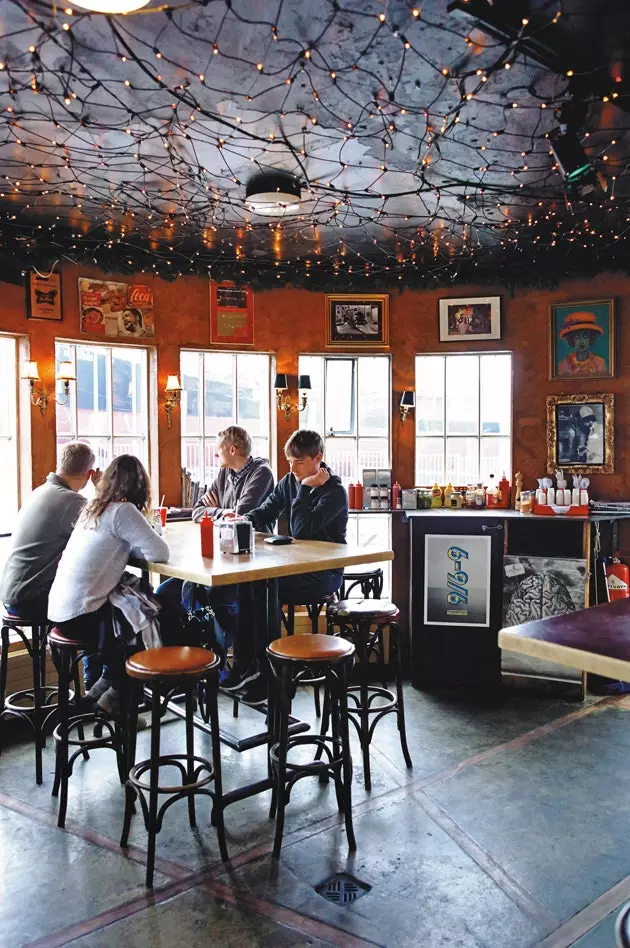
the Tómasar ‘Bullán’ hamburger restaurant;
Nearby is Bergsson Mathús, where hipsters eat their brunch with boiled eggs and bacon . There is homemade rhubarb jam, wholemeal bread and specimens of monocle for those who do not go with their baby in tow. Its logo is a sheep and a beet, and it is committed to local production.
Its economic importance may have been overshadowed by that of banks and financial services, but the fishing is a big deal in Iceland , embedded in the national psyche as hedge funds never will be. At Keflavík airport they announce the Icelandic Arctic char and the façade of the Harpa concert palace –inaugurated in 2011– imitates salmon scales. The fish here is fresh and varied: local species of scallop, spider crab and Norway lobster, excellent cod, hake and monkfish , and oddities like the redfish, capelin and Greenland halibut.
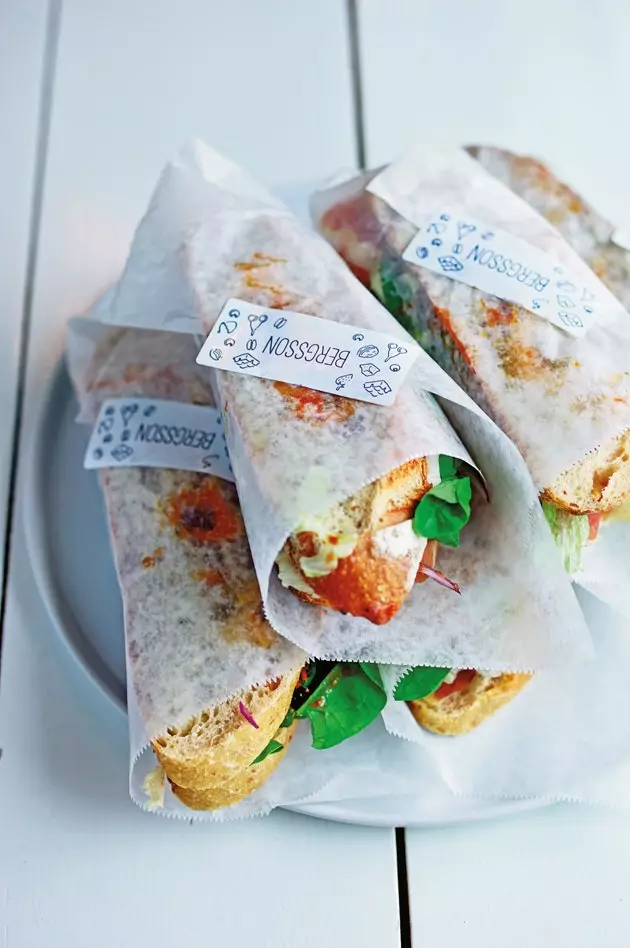
Bergson Mathús sandwiches
At the Ion Adventure hotel restaurant I try Icelandic Arctic char from the nearby lake Thingvellir . An hour from Reykjavík, Ion seems the lair of a stylish supervillain . A concrete and glass box on stilts in a volcanic slope . Around him, the steam of the natural hot springs it rises from a lava field covered in red lichen. More smoke drifts over a warm rivulet that cuts through dunes of grass and bottle-green moss. At sunrise, a vertical rainbow is drawn on the other shore of the lake. Not surprisingly, the Vikings invented tales of trolls and dragons. With sustainability as a philosophy, Ion uses local materials, polished stone, recycled woods and rubber, and horsehair rugs. His architects and interior designers are Icelanders based in California.
In Silfra , the hotel restaurant , the focus is on local produce. The arctic trout this marinated and served with mustard sauce and pickled cucumber , the lamb fillet comes from a nearby farm and is accompanied with red wine sauce and pork cheek , and the cod with pearl barley, pickled red onion and cauliflower . To finish, there is creme brulee made with skyr, an icelandic yogurt. The dishes are first class, executed with precision, without theatricality, showing the raw materials. Sophisticated but, at the same time, with Feet on the ground . Like Reykjavik.
* This article is published in the double issue of the Condé Nast Traveler magazine for November number 78. This issue is available in its digital version for iPad in the iTunes AppStore, and in the digital version for PC, Mac, Smartphone and iPad in the Zinio virtual kiosk (on Smartphone devices: Android, PC/Mac, Win8, WebOS, Rim, iPad) . Also, you can find us on Google Play Newsstand.
*** You may also be interested in...**
- Around Iceland with Sigur Rós
- 24 hours in Reykjavik
- Photographic eye: the prints of Iceland
- Emerging gastronomic powers I: Mexico
- Emerging gastronomic powers II: Peru
- Emerging gastronomic powers III: Brazil
- Emerging Food Powers IV: Tokyo
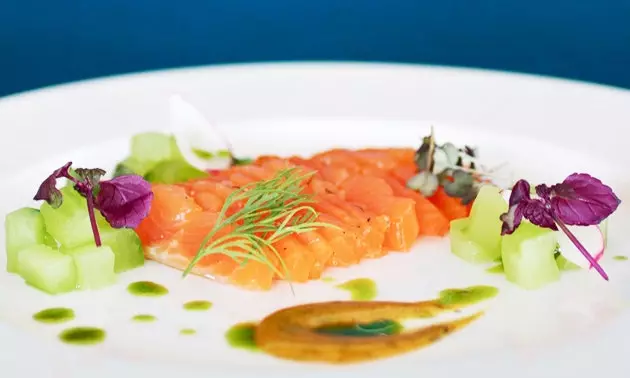
Reykjavik, the phoenix of gastronomy
